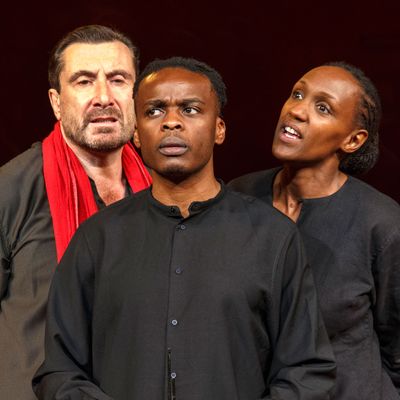
In early 1987, the director Peter Brook and the BAM impresario Harvey Lichtenstein climbed a ladder and popped through a window of the derelict Majestic Theater on Fulton Street in Fort Greene. What they found inside the 1904 building, built for plays but then turned into a movie palace and eventually a church, was a kind of ghost cathedral: a crumbling ruin of commercial culture. Ten months and $5 million later, Brook’s production of The Mahabharata opened in the only slightly renovated building, which deliberately left its plaster exposed, its paint peeling, and its seats horrendous. Even so, the nine-hour Indian epic, with two additional hours provided for food breaks if you attended a marathon, played to 97 percent capacity for three months and reaped an astounding $1.5 million at the box office. The men’s vision of bringing “contemporary work for a large mainstream audience” to New York — the phrase comes from a letter Brook wrote at the time to Lichtenstein — was off to a propitious start.
Almost 30 years later, you can see that letter in an exhibition in the upgraded shabby-chic lobby of the theater, which was renamed the Harvey, in Lichtenstein’s honor, in 1999. (The seats were finally made comfortable in 2012.) Inside the auditorium itself, you can see Brook’s distillation of the Indian epic into an 80-minute gem called Battlefield, which opens tonight as a highlight of BAM’s 2016 Next Wave festival. The two narratives taken together — the play’s and the theater’s — raise some uncomfortable questions about the state of the avant-garde, which in other recent Next Wave presentations has often seemed less avant than dernier. Could it be that each succeeding wave is milder and triter than the one that came before?
Certainly Battlefield is a potent reminder of the idea’s original power. Despite its abstruse source in a complicated Sanskrit war story first recorded around 400 B.C. — at some 200,000 lines, The Mahabharata is by far the longest epic known to literature — the new play is, like the earlier one, radically approachable, the more so for its brevity. Here, Brook focuses on just one slice of the tale: the struggle of the surviving victor of a calamitous intra-family battle, in which millions of warriors are said to have died, to face the equally gruesome task of surviving the peace. In this he is advised by his noble mother, his blind uncle (the losing king), and a series of homilies and fables, acted out simply in flashback. The natural world and its talking animals are presented in the simplest way possible, with various colored fabrics providing all the special effects and transformations needed. Other than that, there is almost nothing onstage but a few piles of bamboo sticks, which seem to represent both weapons and bones. And the only sound effect is the live drumming of Toshi Tsuchitori, a veteran of the 1987 production. It is enough.
How much, after all, do you need to appreciate the contemporary relevance? Even if Brook hadn’t suggested in a program note the parallels to modern catastrophes like Hiroshima and, more recently, Syria, you would have to be insensate not to understand that the questions raised (and left unanswered) by the story are eternal. Some are political, some moral, some existential; all are stripped down to their plainest form — plainer even than in 1987 — and enacted with passion and nimbleness but little artifice by the superb cast of four. In this context, criticizing the text (credited to Jean-Claude Carrière, who wrote the original play, and to Brook and his frequent collaborator Marie-Hélène Estienne as adaptors) would be like criticizing a tree or a river, though I will say that a comic interlude of attempted audience participation seemed like a mistake to me, releasing too much tension near the end. At most other times the production’s deliberate limitation of expressive tricks created emotions so inverse-proportionally large that they could only be released in tears. Reader, I cried.
If I have cried at other recent Next Wave productions, or other avant-garde offerings around town, it was not for the same reason. Boredom, exasperation, and a feeling of artistic end-times have more usually been the causes. On the same stage last month a production of Phaedra(s) by the Odéon Théâtre de l’Europe, starring Isabelle Huppert, had me thinking that self-consciously experimental theater-makers had finally busted through the ceiling of pretension into utter imbecility. (Live vomit and video are dead giveaways.) How did Brook’s experiment in minimal means and maximal emotion result in its reverse? O tempora! O Harvey! Luckily we have Brook back among us, at 91, to demonstrate once again that contemporary theater can and should be talking to “a large mainstream audience,” not just to itself.
Battlefield is at the BAM Harvey Theater through October 9.

